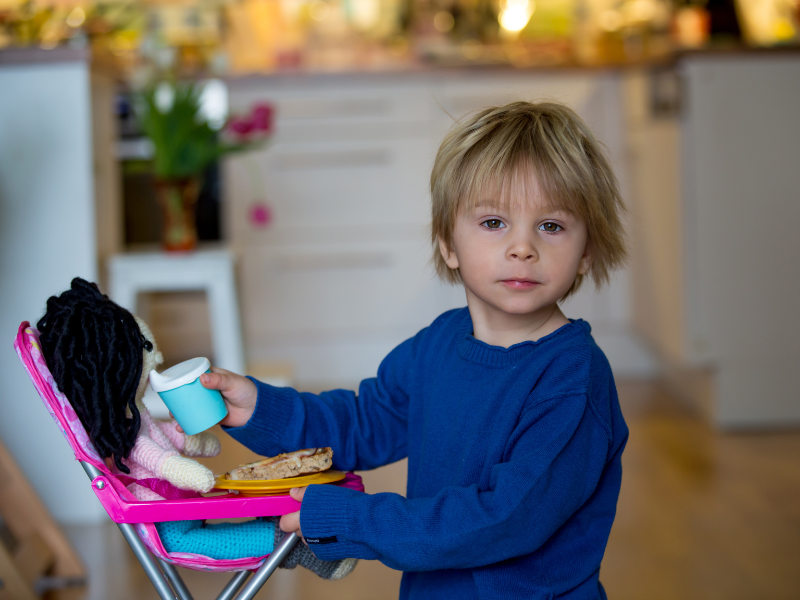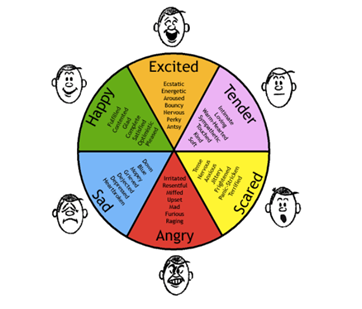Welcoming a new addition to your family is a time full of many emotions. You may catch yourself daydreaming about newborn cuddles, baby soft skin, and the tiny socks again! Oh, those sweet moments of watching a little being discover the world in front of your very own eyes! Let’s not forget baby’s first friend, their sibling(s)! How exciting to see them interact with one another and build their special sibling bond!
Now don’t get me wrong. As a parent, I understand that with lots of hope come lots of worries. How am I going to balance this? What about my oldest? What about my youngest? I’m scared of
being spread too thin! The combination of worry and hope is a natural journey you take as your family grows.

Consider the techniques in this blog as suggestions to help you navigate this journey. Whether you’re expecting a new baby, or have welcomed one, look below and let us know what you think!
Preparing for a baby
Talk, discuss, and process!
Children process change in various ways. Talking about the baby can help your family unit process the change together. Based on their age, you may notice a few different responses. Younger
children may not necessarily ask questions or even acknowledge the conversation and that’s developmentally appropriate! Children in this age range often use play and physical props to
understand and process. Older children may use your initial conversation as a base to ask more question. Depending on their age, you may hear a lot of repeated questions, such as “When is the
baby coming?” “Where is the baby?”. As you find your child repeating their questions, their brain is reinforcing the change that you have shared with them and figuring out what that means. Regardless of how your child processes the information, know that sharing change can help children anticipate expectations and creates dialogue to address any worry or concerns that they may have. When introducing the addition of a baby, start by expressing your love for them, their strengths and things that won’t change. “I love you so much for the smart, confident and curious child that you are!”, “You can still sleep in your bed.”, “Your favourite dino pjs are still yours to keep!”. This helps your child understand their value and importance in your family. If you have multiple older children, you can do this activity together or spend one-on-one time. The goal is for each child to hear about their uniqueness to promote confidence and give them a sense of being an integral member of your family unit.
Talking to your child about the new addition and small changes can help them feel involved and a part of the change. “When the baby comes, we will need to get some smaller clothes to fit the baby. Do you want to help me find some clothes?”, “The living room will look slightly different because we need a changing diaper station. I will set it up in a few months, and if you would like to help, you’re more than welcome to!”

Prop baby
For siblings in the toddler, preschool and young school age range, a prop baby can be an interactive way to practice getting ready for the baby. Involve your child(ren) in learning how to play
and engage with baby. This could be conversations around using gentle hands, learning songs to sing, and maybe even learning what to do when a baby is crying! Although a prop baby won’t replace your new addition, the introduction and practice can help your child understand the expectations of things you can and cannot do with a baby. There are also many opportunities for pretend play for caregivers to practice responding to multiple children’s needs. “Hey baby, your big brother was talking to mom and needs help. Please give me some time to help brother” or “Hey, big sister, baby sounds hungry. I can come to play with you after she is fed ” (Shout out to Dianna our paediatric physiotherapist for sharing this strategy) .
Recognizing feelings and expressing emotions
Any change in the family can cause a range of emotions and feelings. You may commonly hear that your child may show signs of regression (not sleeping well, wetting the bed, not engaging in activities independently that they did before the baby). One of our doulas and childbirth educator at The WOMB, Karen, says it best, “Children are brilliant observers. They see that this baby shows up and is getting so much of their parent’s energy and attention. Did you poop? No worries, I’ll change your diaper. Having trouble sleeping? All good; let’s cuddle and rock until you are asleep. They see that being small gets extra attention, so they think, ‘why not wet the bed or go back to wearing diapers?’ This isn’t “regression” in my books – it is instead a really smart response to a drastically changed family dynamic. I don’t suggest this is conscious, rather an unconscious response to getting their needs met.”

Introducing feelings and learning how to express emotions before a baby arrives can help your child learn strategies to emotionally regulate and communicate the range of emotions that come when dealing with change. Activities like introducing a feelings wheel, reading books about mindfulness or putting up a poster about “How I’m feeling today” can help children learn and label the ranges of feelings that they may feel. The complexity of the emotions can be based on your child’s developmental age and understanding, starting with basic happy, sad, mad, and frustrated and
moving towards specific feelings such as excitement, worry, nervousness, etc. The plus side for parents is that you can focus on these activities before the baby arrives, so your focus can be on
meeting your child’s (ren’s) needs without worrying about meeting the needs of a baby too.
Upon the baby’s arrival, focusing on emotions rather than outbursts can help parents understand their child’s needs and times when they need a little extra attention. When you hear patience is key with multiples, oh, is it ever! During meltdowns and outbursts, avoid labelling behaviours and foster curiosity instead. Once your child can, ask open-ended questions to give you an understanding of what your child is feeling. “Angry? Can you tell me why/what’s making you feel that way?” This is followed by a discussion on healthy solutions and coping strategies “How can we make that feeling smaller? What helps your body feel calm/ better”. The goal isn’t to make the siblings best friends, it’s to teach them how to interact with others while managing your own experiences and emotions. A great start at home to build interpersonal skills and communication!
Modelling
Parents, you will have moments of frustration yourself, you’re human, and your feelings are valid. Children can learn a lot through modelling. When you have moments that get away from you, be open and talk about your emotions. Model positive coping strategies and reflection so your child can learn the strategies that work for you. “Mommy is getting very frustrated, so I am going to talk a few deep breaths and get a glass of water.” This learning experience may not apply right away, but your child sees you practice a coping skill, labelling your emotions and finding a strategy to calm big feelings.
The hope is that these suggestions act as support for you and your loved ones as you adapt a few of these ideas to fit the needs of your individual families. Your journey is about to be full of colour;
we wish you love, laughs and lots of memories! Please know that there are supports here for you at The WOMB.


Hello, hello ? ! My name is Faiza Ali, and I am the child life specialist at The WOMB, serving families all over Ontario! I provide in-home child life
services in Burlington, Milton and Oakville areas, community workshops, and as well as virtual consultations. Send me an email or visit me at the Milton location to learn more about how Child Life can support your family.





